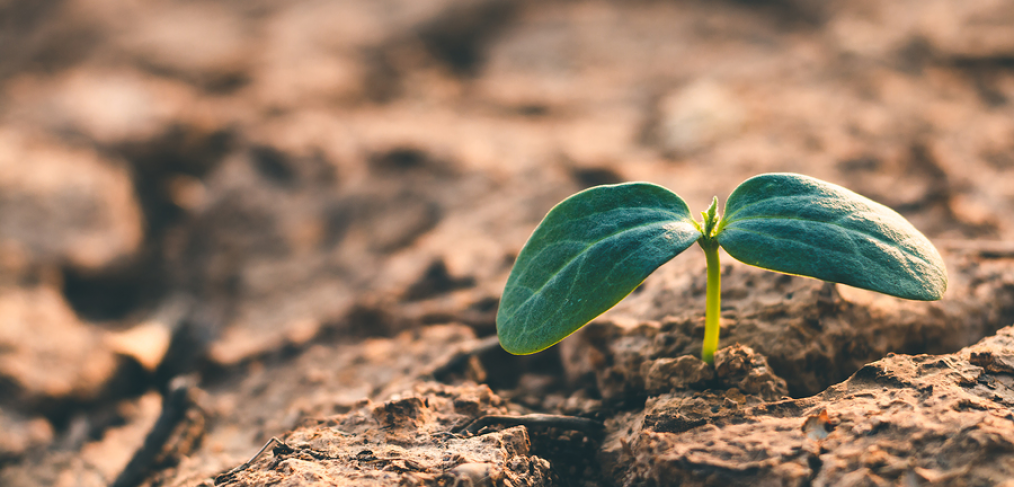
How to Solve Water Runoff Problems
Water Runoff: What it is and how to prevent it

Do you deal with dry, baked soil in your garden or landscaping? Do you regularly water your plants, trees, and lawn and feel like they are still doing poorly and dying? Is your water bill sky high in the summer?
Gardeners, farmers, and even homeowners can struggle with dry, compacted soil and plants that wilt.
Almost any area of the country has drought condition challenges. Depending on where you live, you might be struggling with your garden every year.
There is a scientific reason watering your garden or lawn with a hose or sprinkler system just doesn’t cut it.
There are also several ways to solve water runoff problems while saving time, water, and money, and still have green, growing plants.
Infiltration
Your soil’s infiltration rate is its ability to soak up water. And guess what? Earth, on its own, isn’t that good at soaking up water.
Many soils need to be amended with organic matter before they can perform well.
Guess how this works in nature? Plants. Green vegetation grows everywhere there is soil, ideally.
Plants help to control erosion, to add nutrients back into the ground, and to improve the soil’s infiltration rates.
When soil is bare, it gets compacted, and it erodes. Bare earth in that condition can’t soak up water very quickly or very well. The water you give your garden from your hose doesn’t end up doing it much good.
Your water bill is going sky high because your soil can only take in a certain amount of water. That amount is based on porosity, moisture content, and thickness of the earth.
Once you have watered your plants and trees to the amount that can be infiltrated into the soil, the rest of the water become water runoff.
What often happens is that the surface of the soil feels dry. Therefore, you water your plants or trees.
However, the water is not infiltrating past the top layers of soil or mulch, and the roots are not drinking in any of the water.
Whatever water the top layers do not need ends up becoming water runoff, and you have then wasted time and money.
How to Improve Your Soil’s Infiltration Rates
Improving your soil’s infiltration rate isn’t as simple as tilling it up and adding a bunch of manure or compost. These measures may help in the short term by allowing more water in for a week or two.
However, when you till your ground, you end up exposing more dirt to erosion. This is the problem modern farmers are facing all across our country.
Soil infiltration rates are essential. If your soil’s rate is good, it can store water for plants. In addition, it can use this water more effectively, without the need for additional water.
When retention rates are good, it also reduces water runoff, which is one of the main culprits for urban and suburban flooding. What little soil there is in these areas often can’t do its job, causing sewer systems to overflow.
When you want to improve your infiltration rates, you need to think long-term.
Best Practices for Better Water Retention Rates
Here are some practices that will lead, over time, to better retention rates:
Reduce tillage
That’s right, if you’re going to plant a garden do not till, or don’t till it more than you need to. This is because tillage leads to soil compaction. Compaction is what you want to avoid if you can. Hard, dry ground absorbs almost no water.
Crop rotation
I know you might be saying, “But I’m not a farmer!”
You can help your soil by planting your garden differently from year to year, but also by reducing the amount of mulch to plant ratio you have in your landscaping.
Instead of using large areas of ground covered in black fabric and mulch, try planting densely.
Plant trees
Trees are fantastic for breaking up hard soil and helping that infiltration rate by adding nutrients back into the earth through dead leaf matter. Trees create more soil.
Keep soil covered
I don’t mean covered with fabric, mulch or paper. I mean, cover the soil with plant matter when it’s possible. As mentioned above, plant your ornamentals densely.
In your garden, companion planting reduces your workload and the amount of watering you will have to do.
If you do have areas of the garden you need to cover with mulch or paper to cut down on weeds, consider using a vertical cylinder channel.
Vertical Cylinder Channel Root Watering Systems for Water Runoff Problems

Rootwell Pro-318 Direct-to-root Watering System
A vertical cylinder channel will introduce water below the mulch and topsoil layers directly to the root zone 18 inches deep.
Imagine if you could stop turning on that sprinkler every day.
Imagine if you could get lush, beautiful plants even in drought conditions.
Removing the variable of topsoil layers increases the infiltration rate capacity, allowing zero direct runoff.
This is especially important in urban settings, where comparatively little of the soil’s surface area is available to absorb water. Urban trees can thrive using this method of irrigation.
The Bonuses of Deep Root Watering Systems
Rootwell watering systems are direct-to-root vertical cylinders. They not only save you time and money; there are other benefits for your landscape:
- Allows for zero direct runoff.
- Encourages plants and tree roots to grow at any depth because the roots will grow into the moisture it brings.
- Saves money on watering and improves your garden at the same time.
- Avoid the surface soil saturation uptake, mulch absorption recharging, soil absorption, evaporative water loss or runoff.
- Prevents salt accumulation on the root system.
- BioRetention reducing peak load runoff into combined sewer overflow.
- Save time dispensing the water while providing deep root moisture for more drought-tolerant trees.
- Requires less water and time to water.
- Provides a healthy environment for tree and shrubs to survive in the urban environment.
Bringing it Home
By planting more trees and plants, avoiding unnecessary tillage and compaction of the soil, and by installing the Rootwell deep root systems, you can reduce water runoff problems. You can keep your trees, shrubs, and plants healthy in any drought condition.

